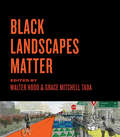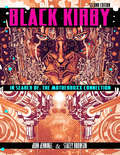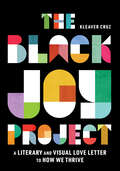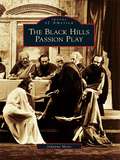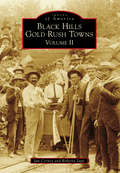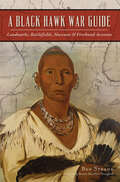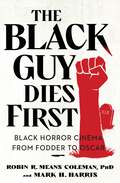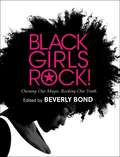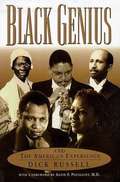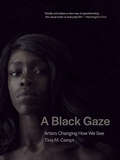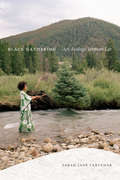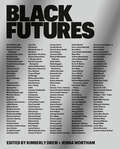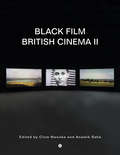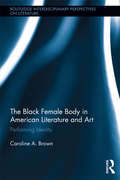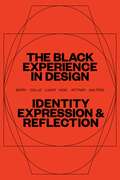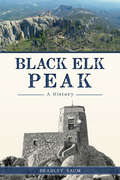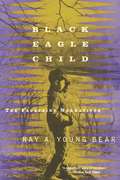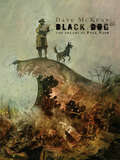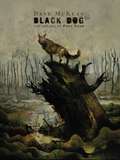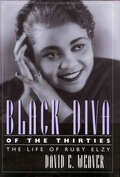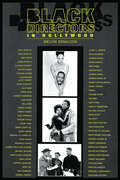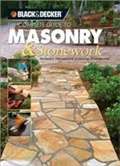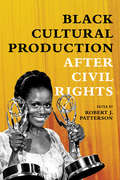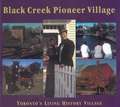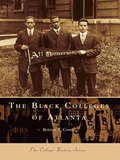- Table View
- List View
Black Landscapes Matter
by Walter Hood Grace Mitchell TadaThe question "Do black landscapes matter?" cuts deep to the core of American history. From the plantations of slavery to contemporary segregated cities, from freedman villages to northern migrations for freedom, the nation’s landscape bears the detritus of diverse origins. Black landscapes matter because they tell the truth. In this vital new collection, acclaimed landscape designer and public artist Walter Hood assembles a group of notable landscape architecture and planning professionals and scholars to probe how race, memory, and meaning intersect in the American landscape.Essayists examine a variety of U.S. places—ranging from New Orleans and Charlotte to Milwaukee and Detroit—exposing racism endemic in the built environment and acknowledging the widespread erasure of black geographies and cultural landscapes. Through a combination of case studies, critiques, and calls to action, contributors reveal the deficient, normative portrayals of landscape that affect communities of color and question how public design and preservation efforts can support people in these places. In a culture in which historical omissions and specious narratives routinely provoke disinvestment in minority communities, creative solutions by designers, planners, artists, and residents are necessary to activate them in novel ways. Black people have built and shaped the American landscape in ways that can never be fully known. Black Landscapes Matter is a timely and necessary reminder that without recognizing and reconciling these histories and spaces, America’s past and future cannot be understood.
Black Kirby: In Search of the MotherBoxx Connection
by John Jennings Stacey RobinsonA catalog of primarily visual artworks-on-paper, this collection is the work of a creative duo that makes up the collaborative entity, Black Kirby. Their art celebrates the groundbreaking work of legendary comic creator Jack Kirby and functions as a highly syncretic mytho-poetic framework by appropriating Kirby's bold forms and revolutionary ideas combined with themes centered on AfroFuturism, social justice, Black history, media criticism, science fiction, magical realism, and the utilization of Hip Hop culture as a methodology for creating visual expression. Their work also focuses on the digital medium: how its inherent affordances offer much more flexibility in the expression of visual communication and what that means in its production and consumption in the public sphere. In a sense, Black Kirby appropriates the gallery as a conceptual crossroads to examine identity as a socialized concept, and to show the commonalities between Black comics creators and Jewish comics creators and how both utilize the medium of comics as space of resistance. The duo attempts to re-medicate blackness and other identity contexts as sublime technologies that produce experiences that can limit human progress and possibility.
The Black Joy Project
by Kleaver CruzThe perfect holiday gift for the book lover, art enthusiast and freedom fighter in your lifeFeaturing 117 full-color photos and eight breathtaking essays on a force that fuels Black life all around the globe, this is Humans of New York meets The Black Book"A patchwork quilt of visually stunning images, captured moments of triumph, antidotes to trauma narratives and rich, ebullient emotional and verbal spice for the soul." – Michael W. Twitty, culinary and cultural historian, and author of The Cooking Gene and Koshersoul"In literature, there are some books that transcend mere pages and ink, becoming essential pieces of cultural expression. One such book poised to make its mark is The Black Joy Project…. This ambitious work breaks new ground." – EssenceBlack Joy is everywhere. From the bustling streets of Lagos to hip-hop blasting through apartment windows in the Bronx. From the wide-open coastal desert of Namibia to the lush slopes of Jamaica’s Blue Mountains. From the thriving tradition of Candomblé in Bahia to the innovative and trendsetting styles of Soweto, and beyond, Black Joy is present in every place that Black people exist. Now—at last—is a one-of-a-kind celebration of this truth and a life-giving testament to one of the most essential forces that fuels Black life: The Black Joy Project.International in the scale, fist-raising in the prose, and chockfull of gorgeous works by dozens of acclaimed artists, The Black Joy Project does what no other book has ever done. In words and art, it puts joy on the same track as protest and resistance … because that is how life is actually lived. Uprisings in the street, with music as accompaniment. Heartbreaking funerals followed by second line parades. Microaggressions in the office, then coming home to a warm hug and a garden of lilacs. The list goes on.Black Joy is always held in tension with broader systemic wounds. It is a powerful, historically important salve that allows us to keep going and reimagine new ways of being. The Black Joy Project captures these dual realities to incredible, unforgettable effect.The brainchild of educator and activist Kleaver Cruz, The Black Joy Project is an extension of a real-world initiative of the same name. It has become a source of healing and regeneration for Black people of all backgrounds and identities. Long overdue and somehow still worth the wait, The Black Joy Project is a necessary addition for any book lover, art enthusiast, or freedom fighter. And begs the question, What does Black Joy mean to you?
Black Hills Passion Play
by Johanna MeierIn 1932, Josef Meier, a native of Luenen, Germany, brought a small company of actors to the United States to tour with a passion play. It was performed in German, destined for a limited engagement in German theaters, churches, and German-speaking communities. Political and economic conditions in Germany were already deteriorating during this time, and Meier determined to remain in America, to found a permanent home for the play. He translated the play into English, hiring American actors to replace the German-speaking cast. As he booked tours across the United States, Meier continued to seek a suitable permanent outdoor location for his production, mentioning his quest to the public in interviews across the nation. En route to the West Coast, Meier presented the Passion Play in Sioux Falls, the only town of size within South Dakota at that time. A group of businessmen from the Black Hills attended and asked Meier to examine possible sites in their area. He chose a spectacular natural location in Spearfish, and in 1939, an amphitheater was constructed and became the home of the renamed Black Hills Passion Play of America.
Black Hills Gold Rush Towns: Volume II
by Jan Cerney Roberta SagoRising out of the prairie, the Black Hills of South Dakota and Wyoming had long been rumored to have promising quantities of gold. Sacred to the Lakota, the Black Hills was part of the land reserved for them in the Fort Laramie Treaty of 1868. However, the tide of prospectors seeking their fortune in the Black Hills was difficult to stem. Members of the 1874 Custer expedition, lead by Gen. George Armstrong Custer, found gold. In 1875, scientists Henry Newton and Walter Jenney conducted an expedition and confirmed the rumors. By 1876, the trickle of prospectors and settlers coming to the Black Hills was a flood. The US government realized that keeping the interlopers out was impossible, and in 1877 the Black Hills was officially opened to settlement. In this sequel to their Black Hills Gold Rush Towns book, the authors expand their coverage of Black Hills towns during the gold-rush era.
A Black Hawk War Guide: Landmarks, Battlefields, Museums & Firsthand Accounts (Military)
by Ben StrandThe Black Hawk War was the final conflict east of the Mississippi River between American Indian communities and the United States regular troops and militia. Exploring the museums, wayside markers and parks relating to that struggle is not just a journey of historic significance through beautiful natural scenery. It is also an amazing convergence of legendary personalities, from Abraham Lincoln to Jefferson Davis. Follow the fallout of the war from the Quad Cities on the Illinois/Iowa border, through the "Trembling Lands" along the Kettle Morraine and into the Driftless Area of southern Wisconsin. Pairing local insight with big-picture perspective, Ben Strand charts an overlooked quadrant of America's frontier heritage.
The Black Guy Dies First: Black Horror Cinema from Fodder to Oscar
by Robin R. Means Coleman Mark H. HarrisA definitive and surprising exploration of the history of Black horror films, after the rising success of Get Out, Candyman, and Lovecraft Country from creators behind the acclaimed documentary, Horror Noire.The Black Guy Dies First explores the Black journey in modern horror cinema, from the fodder epitomized by Spider Baby to the Oscar-winning cinematic heights of Get Out and beyond. This eye-opening book delves into the themes, tropes, and traits that have come to characterize Black roles in horror since 1968, a year in which race made national headlines in iconic moments from the enactment of the 1968 Civil Rights Act and Martin Luther King Jr.&’s assassination in April. This timely book is a must-read for cinema and horror fans alike.
Black Girls Rock!: Owning Our Magic. Rocking Our Truth.
by Beverly BondFrom the award-winning entrepreneur, culture leader, and creator of the BLACK GIRLS ROCK! movement comes an inspiring and beautifully designed book that pays tribute to the achievements and contributions of black women around the world.Fueled by the insights of women of diverse backgrounds, including Michelle Obama, Angela Davis, Shonda Rhimes, Misty Copeland Yara Shahidi, and Mary J. Blige, this book is a celebration of black women’s voices and experiences that will become a collector’s items for generations to come. Maxine Waters shares the personal fulfillment of service. Moguls Cathy Hughes, Suzanne Shank, and Serena Williams recount stories of steadfastness, determination, diligence, dedication and the will to win. Erykah Badu, Toshi Reagon, Mickalane Thomas, Solange Knowles-Ferguson, and Rihanna offer insights on creativity and how they use it to stay in tune with their magic. Pioneering writers Rebecca Walker, Melissa Harris-Perry, and Joan Morgan speak on modern-day black feminist thought. Lupita Nyong’o, Susan Taylor, and Bethann Hardison affirm the true essence of holistic beauty. And Iyanla Vanzant reinforces Black Girl Magic in her powerful pledge. Through these and dozens of other unforgettable testimonies, Black Girls Rock! is an ode to black girl ambition, self-love, empowerment, and healing. Pairing inspirational essays and affirmations with lush, newly commissioned and classic photography, Black Girls Rock!: Owning Our Magic and Rocking Our Truth is not only a one-of-a-kind celebration of the diversity, fortitude, and spirituality of black women but also a foundational text that will energize and empower every reader.
Black Genius and the American Experience
by Dick RussellThe findings from wide-ranging interviews and careful historical research, Black Genius explores the roots of black achievement in America. The results are surprising and inspiring. Interweaving past and present, beginning with this country's inception, Russell covers the importance of continuity and tradition in nurturing black artists, scientists, and leaders. Here are memorable portraits of Wynton Marsalis, Ralph Ellison, Louis Armstrong, Toni Morrison, Duke Ellington, James Baldwin, Paul Robeson, Muhammad Ali, Lois Mailou-Jones, and other black notables. Through their eyes, we see how they were inspired, fostered, and encouraged by their mentors, how the creative tradition was passed from one generation to the next. This great theme of interconnectedness is played out, for example, in Wynton Marsalis's links to not only Ellington and Armstrong, but also, through the venerable author Albert Murray, to Ellison and the artist Romare Bearden. In addition to these well-known figures, Russell also rediscovers less familiar ones: writers, activists, scientists, and artists whose reputations may be underrecognized.
A Black Gaze: Artists Changing How We See
by Tina M. CamptExamining the work of contemporary Black artists who are dismantling the white gaze and demanding that we see--and see Blackness in particular--anew.In A Black Gaze, Tina Campt examines Black contemporary artists who are shifting the very nature of our interactions with the visual through their creation and curation of a distinctively Black gaze. Their work--from Deana Lawson's disarmingly intimate portraits to Arthur Jafa's videos of the everyday beauty and grit of the Black experience, from Khalil Joseph's films and Dawoud Bey's photographs to the embodied and multimedia artistic practice of Okwui Okpakwasili, Simone Leigh, and Luke Willis Thompson--requires viewers to do more than simply look; it solicits visceral responses to the visualization of Black precarity. Campt shows that this new way of seeing shifts viewers from the passive optics of looking at to the active struggle of looking with, through, and alongside the suffering--and joy--of Black life in the present. The artists whose work Campt explores challenge the fundamental disparity that defines the dominant viewing practice: the notion that Blackness is the elsewhere (or nowhere) of whiteness. These artists create images that flow, that resuscitate and revalue the historical and contemporary archive of Black life in radical ways. Writing with rigor and passion, Campt describes the creativity, ingenuity, cunning, and courage that is the modus operandi of a Black gaze.
Black Gathering: Art, Ecology, Ungiven Life (Black Outdoors: Innovations in the Poetics of Study)
by Sarah Jane CervenakIn Black Gathering Sarah Jane Cervenak engages with Black artists and writers who create alternative spaces for Black people to gather free from interruption or regulation. Drawing together Black feminist theory, critical theories of ecology and ecoaesthetics, and Black aesthetics, Cervenak shows how novelists, poets, and visual artists such as Gayl Jones, Toni Morrison, Clementine Hunter, Samiya Bashir, and Leonardo Drew advance an ecological imagination that unsettles Western philosophical ideas of the earth as given to humans. In their aestheticization and conceptualization of gathering, these artists investigate the relationships among art, the environment, home, and forms of Black togetherness. Cervenak argues that by offering a formal and conceptual praxis of gathering, Black artists imagine liberation and alternative ways of being in the world that exist beyond those Enlightenment philosophies that presume Black people and earth as given to enclosure and ownership.
Black Futures
by Kimberly Drew Jenna WorthamAn archive of collective memory and exuberant testimonyA luminous map to navigate an opaque and disorienting presentAn infinite geography of possible futures What does it mean to be Black and alive right now?Kimberly Drew and Jenna Wortham have brought together this collection of work—images, photos, essays, memes, dialogues, recipes, tweets, poetry, and more—to tell the story of the radical, imaginative, provocative, and gorgeous world that Black creators are bringing forth today. The book presents a succession of startling and beautiful pieces that generate an entrancing rhythm: Readers will go from conversations with activists and academics to memes and Instagram posts, from powerful essays to dazzling paintings and insightful infographics. In answering the question of what it means to be Black and alive, Black Futures opens a prismatic vision of possibility for every reader.
Black Film British Cinema II
by Clive Nwonka and Anamik SahaThe politics of race in British screen culture over the last 30 years vis-a-vis the institutional, textual, cultural and political shifts that have occurred during this period.Black Film British Cinema II considers the politics of blackness in contemporary British cinema and visual practice. This second iteration of Black Film British Cinema, marking over 30 years since the ground-breaking ICA Documents 7 publication in 1988, continues this investigation by offering a crucial contemporary consideration of the textual, institutional, cultural and political shifts that have occurred from this period. It focuses on the practices, values and networks of collaborations that have shaped the development of black film culture and representation. But what is black British film? How do such films, however defined, produce meaning through visual culture, and what are the political, social and aesthetic motivations and effects? How are the new forms of black British film facilitating new modes of representation, authorship and exhibition? Explored in the context of film aesthetics, curatorship, exhibition and arts practice, and the politics of diversity policy, Black Film British Cinema II provides the platform for new scholars, thinkers and practitioners to coalesce on these central questions. It is explicitly interdisciplinary, operating at the intersections of film studies, media and communications, sociology, politics and cultural studies. Through a diverse range of perspectives and theoretical interventions that offer a combination of traditional chapters, long-form essays, shorter think pieces, and critical dialogues, Black Film British Cinema II is a comprehensive, sustained, wide ranging collection that offers new framework for understanding contemporary black film practices and the cultural and creative dimensions that shape the making of blackness and race.ContributorsBidisha, Ashley Clark, Shelley Cobb, James Harvey, Melanie Hoyes, Maryam Jameela, Kara Keeling, Oslem Koskal, Rabz Lansiquot, Sarita Malik, Richard Martin, So Mayer, Alessandra Raengo, Richard T. Rodríguez, Tess S. Skadegård Thorsen, Natalie Wreyford
The Black Female Body in American Literature and Art: Performing Identity (Routledge Interdisciplinary Perspectives on Literature)
by Caroline BrownThis book examines how African-American writers and visual artists interweave icon and inscription in order to re-present the black female body, traditionally rendered alien and inarticulate within Western discursive and visual systems. Brown considers how the writings of Toni Morrison, Gayl Jones, Paule Marshall, Edwidge Danticat, Jamaica Kincaid, Andrea Lee, Gloria Naylor, and Martha Southgate are bound to such contemporary, postmodern visual artists as Lorna Simpson, Carrie Mae Weems, Kara Walker, Betye Saar, and Faith Ringgold. While the artists and authors rely on radically different media—photos, collage, video, and assembled objects, as opposed to words and rhythm—both sets of intellectual activists insist on the primacy of the black aesthetic. Both assert artistic agency and cultural continuity in the face of the oppression, social transformation, and cultural multiplicity of the late twentieth and early twenty-first centuries. This book examines how African-American performative practices mediate the tension between the ostensibly de-racialized body politic and the hyper-racialized black, female body, reimagining the cultural and political ground that guides various articulations of American national belonging. Brown shows how and why black women writers and artists matter as agents of change, how and why the form and content of their works must be recognized and reconsidered in the increasingly frenzied arena of cultural production and political debate.
The Black Experience in Design: Identity, Expression & Reflection
by Anne H. BerryThe Black Experience in Design spotlights teaching practices, research, stories, and conversations from a Black/African diasporic lens. Excluded from traditional design history and educational canons that heavily favor European modernist influences, the work and experiences of Black designers have been systematically overlooked in the profession for decades. However, given the national focus on diversity, equity, and inclusion in the aftermath of the nationwide Black Lives Matter protests in the United States, educators, practitioners, and students now have the opportunity—as well as the social and political momentum—to make long-term, systemic changes in design education, research, and practice, reclaiming the contributions of Black designers in the process.The Black Experience in Design, an anthology centering a range of perspectives, spotlights teaching practices, research, stories, and conversations from a Black/African diasporic lens. Through the voices represented, this text exemplifies the inherently collaborative and multidisciplinary nature of design, providing access to ideas and topics for a variety of audiences, meeting people as they are and wherever they are in their knowledge about design. Ultimately, The Black Experience in Design serves as both inspiration and a catalyst for the next generation of creative minds tasked with imagining, shaping, and designing our future.
Black Elk Peak: A History (Natural History)
by Bradley SaumThe history of Black Elk Peak—previously known as Hinhan Kaga and, more recently, as Harney Peak—remained segmented and scattered throughout the shadows of antiquity, until now. The natural landmark’s namesake, Black Elk, experienced his great vision here, solidifying his status as a Sioux holy man. Obstructed by the insurmountable granite, General Custer and his horse nearly summited during the 1874 expedition. On that granite, sculptor Gutzon Borglum made the decision to carve a grand monument into the face of nearby Mount Rushmore. Prior to serving as the first Pine Ridge Reservation Indian agent and then mayor of Rapid City, Valentine McGillycuddy documented his ascent to the peak in 1875, where his ashes would come to rest. Author Bradley Saum chronicles the unique and untold stories that are intrinsically linked to the highest point in the Black Hills.
Black Eagle Child
by Ray A. Young BearStories of life on a Native American settlement during the 50s,60s and 70s. Told in poetry in prose.
Black Dog: The Dreams of Paul Nash (Second Edition)
by Dave McKeanNew edition with bonus material by Dave McKean!Dark Horse proudly presents a new, second edition, of the graphic novel by legendary artist Dave McKean, based on the life of Paul Nash, a surrealist painter during World War 1. The Dreams of Paul Nash deals with real soldier's memoirs and all the stories add up to a moving piece about how war and extreme situations change us, how we deal with that pain, and, in Nash's case, how he responded by turning his landscapes into powerful and fantastical psychoscapes. The second edition of Black Dog: The Dreams of Paul Nash features a new cover by Dave McKean, along with 15 pages of new bonus material examining the creation of the book.
Black Dog: The Dreams of Paul Nash
by Dave McKeanA new original graphic novel by DAVE McKEAN!Best known for his collaborations with Neil Gaiman, Dave McKean defied expectations with his stunning debut as writerand artist in Cages, winner of multiple awards for Best Graphic Album. Dark Horse proudly presents a new original graphic novel by the legendary artist based on the life of Paul Nash, a surrealist painter during World War I. The Dreams of Paul Nash deals with real soldiers&’ memoirs, and all the stories add up to a moving piece about how war and extreme situations change us and how we deal with the resultant pain—in Nash&’s case, by turning his landscapes into powerful and fantastical &“psychoscapes.
Black Diva of the Thirties: The Life of Ruby Elzy (Willie Morris Books in Memoir and Biography)
by David E. WeaverWhile undergoing routine surgery to remove a benign tumor, Ruby Elzy died. She was only thirty-five. Had she lived, she would have been one of the first Black artists to appear in grand opera. Although now in the shadows, she was a shining star in her day. She entertained Eleanor Roosevelt in the White House. She was Paul Robeson's leading lady in the movie version of The Emperor Jones. She starred in Birth of the Blues opposite Bing Crosby and Mary Martin. She sang at Harlem's Apollo Theater and in the Hollywood Bowl. Her remarkable soprano voice was known to millions over the radio. She was personally chosen by George Gershwin to create one of the leading roles in his masterpiece, that of Serena in the original production of Porgy and Bess. Her signature song was the vocally demanding “My Man's Gone Now.” From obscurity she had risen to great heights. Ruby Pearl Elzy (1908-1943) was born in abject poverty in Pontotoc, Mississippi. Her father abandoned the family when she was five, leaving her mother, a strong, devout woman, to raise four small children. Ruby first sang publicly at the age of four and even in childhood dreamed of a career on the stage. Good fortune struck when a visiting professor, overwhelmed upon hearing her beautiful voice at Rust College in Mississippi, arranged for her to study music at Ohio State University. Later, on a Rosenwald Fellowship, she enrolled at the Juilliard School in New York City. After more than eight hundred performances in Porgy and Bess, she set her sights on a huge goal, to sing in grand opera. She was at the peak of her form. While she was preparing for her debut in the title role of Verdi's Aida, tragedy struck. During her brief career, Ruby Elzy was in the top tier of American sopranos and a precursor who paved a way for Leontyne Price, Jessye Norman, Kathleen Battle, and other black divas of the operatic stage. This biography acknowledges her exceptional talent, recognizes her contribution to American music, and tells her tragic yet inspiring story.
Black Directors in Hollywood
by Melvin DonalsonThis book offers a first comprehensive look at the work of black directors in Hollywood, from pioneers such as Gordon Parks, Melvin Van Peebles, and Ossie Davis to current talents including Spike Lee, John Singleton, Kasi Lemmons, and Carl Franklin. Discussing 67 individuals and over 135 films, Melvin Donalson thoroughly explores how black directors' storytelling skills and film techniques have widened both the thematic focus and visual style of American cinema. Assessing the meanings and messages in their films, he convincingly demonstrates that black directors are balancing Hollywood's demand for box office success with artistic achievement and responsibility to ethnic, cultural, and gender issues.
Black & Decker: The Complete Guide to Masonry and Stonework
by Creative Publishing InternationalFeatures all new, state-of-the-art information on decorative concrete finishes, including acid coloring, stamping, and using cementitious paints. Another new section shows easy methods for casting concrete in forms to create countertops, garden benches, and other accessories.
Black Cultural Production after Civil Rights
by Robert PattersonThe post-civil rights era of the 1970s offered African Americans an all-too-familiar paradox. Material and symbolic gains contended with setbacks fueled by resentment and reaction. African American artists responded with black approaches to expression that made history in their own time and continue to exercise an enormous influence on contemporary culture and politics.This collection's fascinating spectrum of topics begins with the literary and cinematic representations of slavery from the 1970s to the present. Other authors delve into visual culture from Blaxploitation to the art of Betye Saar to stage works like A Movie Star Has to Star in Black and White as well as groundbreaking literary works like Corregidora and Captain Blackman. A pair of concluding essays concentrate on institutional change by looking at the Seventies surge of black publishing and by analyzing Ntozake Shange's for colored girls… in the context of current controversies surrounding sexual violence. Throughout, the writers reveal how Seventies black cultural production anchors important contemporary debates in black feminism and other issues while spurring the black imagination to thrive amidst abject social and political conditions.Contributors: Courtney Baker, Soyica Diggs Colbert, Madhu Dubey, Nadine Knight, Monica White Ndounou, Kinohi Nishikawa, Samantha Pinto, Jermaine Singleton, Terrion L. Williamson, and Lisa Woolfork
Black Creek Pioneer Village: Toronto's Living History Village
by Helma Mika Nick Mika Gary ThompsonBlack Creek Pioneer Village: Toronto’s Living History Village is a recreation of a typical crossroads community found in Southern Ontario during the 1800s. Nestled on 56 acres of tranquility, the village is a step-back-in-time, a respite from the towering buildings and bustling traffic of the 21st century. Here, visitors discover the joys and daily realities of living in early Ontario. Here at the village, the sights, sounds and smells are tangible reminders of our past. Meet the blacksmith, the tinsmith, the weaver, the miller, the printer … Meet the people who "live" at Black Creek and bring our yesteryears to life.
Black Colleges of Atlanta, The (Campus History)
by Rodney T. CohenBy 1865, although Atlanta and the Confederacy still lay wounded in the wake of the Union victory, black higher education began its thrust for recognition. Some of the first of the American colleges formed specifically for the education of black students were founded in Atlanta, Georgia. These schools continue, over a century later, to educate, train and inspire. Through an engaging collection of images and informative captions, their story begins to unfold. Atlanta University was the pioneer college for blacks in the state of Georgia. Founded in 1865, it was followed by Morehouse College in 1867, Clark University in 1869, and Spelman and Morris Brown Colleges in 1881. By 1929, Atlanta University discontinued undergraduate work and affiliated with Morehouse and Spelman in a plan known as the "Atlanta University System." A formal agreement of cooperation including all of the Atlanta colleges occurred in 1957, solidifying the common goal and principles each school was founded upon-to make literate the black youth of America. Today, the shared resources of each institution provide a unique and challenging experience for young Africa Americans seeking higher education. The schools boast a long and distinguished list of alumni and scholars, including W.E.B. DuBois, James Weldon Johnson, Martin Luther King, Henry O. Tanner, and C. Eric Lincoln.
